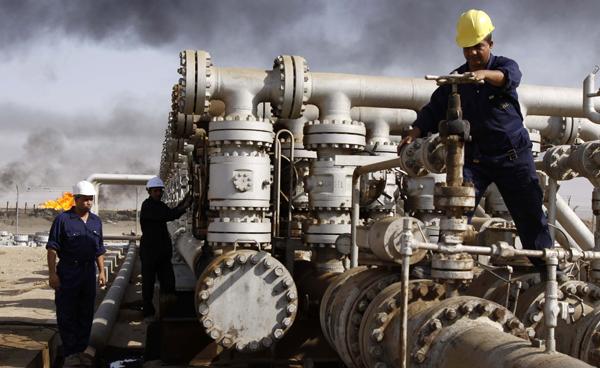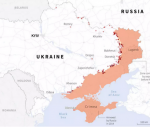You are here
Oil feels the squeeze of weak growth, strong supplies — IEA
By AFP - Sep 11,2014 - Last updated at Sep 11,2014

PARIS — Demand for oil is feeling the squeeze of weak growth in Europe, slowdown in China and abundant supplies, the International Energy Agency (IEA) said on Thursday.
Shale oil from North America continues to change the global energy landscape, and shipments from members of the Organisation of Petroleum Exporting Countries (OPEC) are shifting increasingly eastward, from routes to the United States towards Asia.
And output from OPEC remains plentiful despite conflict in Iraq and unrest in Libya.
All these factors help to explain why the price of oil has fallen below $100 a barrel, the IEA said in its monthly review of the oil market.
The growth in demand for oil this year and next will be markedly lower than expected, the agency added.
The IEA's report helped to push the price down further by 46 cents to $91.21 for benchmark West Texas Intermediate oil for October delivery, in mid-day trading.
'Remarkable' slowdown
"The recent slowdown of demand growth is nothing short of remarkable," the International Energy Agency said.
Also, "OPEC demand has been remarkably robust in view of the troubles in Libya and Iraq".
The agency attributed the "clear slowdown" in demand growth to "ongoing weakness in both European and Chinese economies, coupled with lower-than-expected oil deliveries in Japan and Brazil".
Recent economic "malaise" across much of Europe "has been the dominant downside influence" on the oil market, it indicated, with the eurozone "struggling with stagflation" and "getting perilously close to deflation".
Meanwhile growth of demand for oil in China was "anaemic".
Compensating in part for this was an increase in overall deliveries to the United States.
The IEA cut its estimate for oil demand this year to growth of 1 per cent or to 900,000 barrels per day (bpd), from a previous estimate of 1.1 per cent or 1 million bpd.
That takes total demand for the year to 92.6 million barrels per day (mbpd).
In the second quarter of this year, growth of demand showed a fall to the lowest rate for two and a half years to about 480,000 bpd from the level in 2013.
"Eurozone economic growth is petering out, while US petrochemical usage fell alongside pronounced declines in Japanese power-sector demand," the IEA said.
The agency "tempered" its outlook for 2015 to growth of 1.2 mbpd from 1.3 mbpd forecast previously.
This update put global deliveries at 93.8 mbpd, or about 165,000 bpd less than previously forecast.
But this would still amount to a "notable" acceleration of demand from the level in 2014, the IEA said.
"While demand growth is still expected to gain momentum, the expected pace of recovery is now looking somewhat more subdued," it said.
The amount of oil held in inventories was rising, with industrial stocks in the area covered by the Organisation for Economic Cooperation and Development rising by 15.5 mbpd in July to 2,670 mbpd, and the signs were that another 19.5 mbpd had been added in August.
While noting that supplies were plentiful and prices had fallen, the IEA also said that global supplies of oil in August had fallen by 400,000 bpd to 92.9 mbd because production from outside OPEC had fallen.
Shift in oil flows
Also, output by OPEC fell in August by 130,000 bpd to 30.31 mbpd "as steady recovery in Libya failed to offset lower supply from Saudi Arabia and Iraq".
The agency said: "OPEC supply has been remarkably robust in view of the troubles in Libya and Iraq" and the latest fall in Saudi Arabian output seemed to reflect reduced demand by refiners in the United States.
"Shifts in the direction of OPEC export flows are noteworthy," the agency said. "There were signs that West African oil was increasingly going to Asia and less to the United States, and "Saudi exports seem to be showing the beginning of a similar shift".
There were other signs "setting the stage for a broad rebalancing of trade flows".
The IEA has already said repeatedly that the structure of the global energy market is undergoing a vast and permanent shift towards Asia because of the rise of shale energy in North America, and the rise of demand in emerging Asian economies.
It said on Thursday: "Thus is the global crude market continuing to adjust to the new North American supply reality."
Related Articles
Global demand for oil is still weighed heavily by weak economic growth, and this together with a supply glut is pushing down prices which may fall further, the International Energy Agency (IEA) said on Tuesday.
PARIS — Oil prices may have rebounded off 12-year lows struck last month, but any hope for a broader recovery in the market would be misplac
VIENNA — A recent announcement by the Organisation of Petroleum Exporting Countries (OPEC) that it is keeping crude output levels unchanged

















